Effect of Heat Treatment on the Microstructure and Properties of a Ti3Al Linear Friction Welding Joint
Abstract
:1. Introduction
2. Materials and Methods
2.1. Experimental Materials
2.2. Experimental Methods
3. Results and Discussions
3.1. Microstructural Characteristics of the As-Welded Joint
3.2. Effects of Heat Treatment on Joint Microstructure
3.3. Effects of Heat Treatment on Joint Microhardness
3.4. Effects of Heat Treatment on Joint Tensile Properties
4. Conclusions
- (1)
- The microstructure in the central WZ of Ti3Al LFW joint is metastable β phase. The microstructure in the TMAZ is deformed α2 phase and metastable β phase. As the position becomes closer to the TMAZ near the side of the WZ, the α2 phase gradually decreases, the degree of deformation increases, and the metastable β phase increases.
- (2)
- After being subjected to heat treatment at different temperatures, the microstructure in the WZ of the joint is quite different. At 700 °C, dot-like structures precipitate and their size is less than 1 μm. However, when the heat treatment temperature is above 850 °C, the formed structure is acicular α2 phase with a size of approximately 1 μm, which grows as the heat treatment temperature increases.
- (3)
- The microhardness of the Ti3Al LFW joint after welding is higher than that of the base metal. Heat treatment at 700 °C can significantly enhance the joint microhardness, which then decreases with the increasing heat treatment temperature. After heat treatment at 850 °C, the joint microhardness is lower than that of the as-welded joint. The microhardness of the WZ and the TMAZ is higher than that of the BM zone in the selected heat treatment range.
Author Contributions
Funding
Conflicts of Interest
References
- Zhang, J.; Li, S.; Lang, X.; Cheng, Y. Research and applicatopn of Ti3Al and Ti2AlNb based alloys. Chin. J. Nonferrous Met. 2010, 20, 336–341. [Google Scholar]
- Froes, F.H.; Suryanarayana, C.; Eliezer, D. Review: Synthesis, properties and applications of titanium aluminides. J. Mater. Sci. 1992, 27, 5113–5140. [Google Scholar] [CrossRef]
- Djanarthany, S.; Viala, J.C.; Bouix, J. An overview of monolithic titanium aluminide based on Ti3Al and TiAl. Mater. Chem. Phys. 2001, 3, 301–319. [Google Scholar] [CrossRef]
- Peng, C.; Huang, B.; He, Y. Development of Intermetallic Compound in Ni-Al, Fe-Al and Ti3Al Base System. Spec. Cast. Nonferrous Alloy. 2001, 6, 27–29. [Google Scholar]
- Wu, H.-Q.; Feng, J.-C.; He, J.-S.; Zhou, L. Structure and Crack Forming Susceptibility of TiAl Based Alloy Joints by Electron Beam Welding. J. Mater. Eng. 2005, 4, 7–10. [Google Scholar]
- Wang, G.-Q.; Zhao, Y.; Wu, A.-P.; Zou, G.-S.; Ren, J.-L. Microstructure and high temperature tensile properties of Ti3Al alloys laser welding joint. Chin. J. Nonferrous Met. 2007, 11, 180301807. [Google Scholar]
- David, S.A.; Horton, J.A.; Goodwin, G.M.; Phillips, D.H.; Reed, R.W. Weldability and microstructure of a titanium aluminide. Weld. J. 1990, 69, 133–140. [Google Scholar]
- Baeslack, W.A.; Broderick, T. Effect of cooling rate on the structure and hardness of a Ti-26at% Al-10at% Nb-3at% V-1at% Mo titanium aluminide. Scr. Metall. 1990, 24, 319–324. [Google Scholar] [CrossRef]
- Baeslack, W.A.; Mascorella, T.J.; Kelly, T.J. Weldability of a titanium aluminide. Weld. J. 1989, 68, 483s–498s. [Google Scholar]
- Bhamji, I.; Preuss, M.; Threadgill, P.L.; Addison, A.C. Solid state joining of metals by linear friction welding: A literature review. Mater. Sci. Technol. 2011, 27, 2–12. [Google Scholar] [CrossRef]
- Ma, T.J.; Li, W.-Y.; Xu, Q.Z.; Zhang, Y.; Li, J.L.; Yang, S.Q.; Liao, H.L. Microstructure evolution and mechanical properties of linear friction welded 45 steel joint. Adv. Eng. Mater. 2007, 9, 703–707. [Google Scholar] [CrossRef]
- Grujicic, M.; Yavari, R.; Snipes, J.S.; Ramaswami, S.; Yen, C.-F.; Cheeseman, B.A. Linear friction welding process model for carpenter custom 465 precipitation-hardened martensitic stainless steel. J. Mater. Eng. Perform. 2014, 23, 2182–2198. [Google Scholar] [CrossRef]
- Bhandari, V. Linear Friction Welding of Titanium to Stainless Steel. Master’s Thesis, Cranfield University, Cranfield, UK, 2010. [Google Scholar]
- Rotundo, F.; Marconi, A.; Morri, A.; Ceschini, A. Dissimilar linear friction welding between a SiC particle reinforced aluminum composite and a monolithicaluminum alloy: Microstructural, tensile and fatigue properties. Mater. Sci. Eng. A 2013, 559, 852–860. [Google Scholar] [CrossRef]
- Song, X.; Xie, M.; Hofmann, F.; Jun, T.S.; Connolley, T.; Reinhard, C.; Atwood, R.C.; Connor, L.; Drakopoulos, M.; Harding, S.; et al. Residual stresses in linear friction welding of aluminium alloys. Mater. Des. 2013, 50, 360–369. [Google Scholar] [CrossRef]
- Wanjara, P.; Jahazi, M. Linear friction welding of Ti-6Al-4V: Processing, microstructure, and mechanical-property inter-relationships. Met. Mater. Trans. A 2005, 36, 2149–2164. [Google Scholar] [CrossRef]
- Vairis, A.; Frost, M. High frequency linear friction welding of a titanium alloy. Wear 1998, 217, 117–131. [Google Scholar] [CrossRef]
- Zhang, T.; Li, J.; Ji, Y.; Sun, C. Structure and mechanical properties of TC4 linear friction welding joint. Trans. China Weld. Inst. 2010, 21, 53–56. [Google Scholar]
- Dalgaard, E.; Wanjara, P.; Gholipour, J.; Cao, X.; Jonas, J.J. Linear friction welding of a near-b titanium alloy. Acta Mater. 2012, 60, 770–780. [Google Scholar] [CrossRef]
- Chamanfar, A.; Jahazi, M.; Gholipour, J.; Wanjara, P.; Yue, S. Maximizing the integrity of linear friction welded Waspaloy. Mater. Sci. Eng. A 2012, 555, 117–130. [Google Scholar] [CrossRef]
- Chamanfar, A.; Jahazi, M.; Cormier, J. A review on inertia and linear friction welding of Ni-based superalloys. Met. Mater. Trans. A 2015, 46, 1639–1669. [Google Scholar] [CrossRef]
- Mary, C.; Jahazi, M. Multi-scale analysis of IN-718 microstructure evolution during linear friction welding. Adv. Eng. Mater. 2008, 10, 573–578. [Google Scholar] [CrossRef]
- García, A.M.M. BLISK fabrication by linear friction welding. In Advances in Gas Turbine Technology; Benini, E., Ed.; InTech: Winchester, UK, 2011; pp. 411–434. [Google Scholar]
- Kallee, S.W.; Nicholas, E.D.; Russell, M.J. Friction welding of aero engine components. In Proceedings of the 10th World Conference Titanium, (TI-2003), Hamburg, Germany, 13–18 July 2003; Lutjering, G., Albrecht, J., Eds.; Wiley-VCH: Hamburg, Germany, 2003; pp. 2867–2874. [Google Scholar]
- Karadge, M.; Preuss, M.; Lovell, C.; Withers, P.J.; Bray, S. Texture development in Ti-6Al-4V linear friction welds. Mater. Sci. Eng. A 2007, 459, 182–191. [Google Scholar] [CrossRef]
- Vairis, A.; Frost, M. On the extrusion stage of linear friction welding of Ti6Al4V. Mater. Sci. Eng. A 1999, 271, 477–484. [Google Scholar] [CrossRef]
- Ma, T.J.; Li, W.Y.; Zhong, B.; Zhang, Y.; Li, J.L. Effect of post-weld heat treatment on microstructure and property of linear friction welded Ti17 titanium alloyjoint. Sci. Technol. Weld. Join. 2012, 17, 180–185. [Google Scholar] [CrossRef]
- Ji, Y.; Liu, Y.; Zhang, T.; Zhang, C. Structure and mechanical properties of TC4/TC17 linear friction welding joint. Trans. China Weld. Inst. 2012, 33, 109–112. [Google Scholar]
- Chen, X.; Xie, F.Q.; Ma, T.J.; Li, W.Y.; Wu, X.Q. Microstructure evolution and mechanicalproperties of linear friction welded Ti2AlNb alloy. J. Alloys Compd. 2015, 646, 490–496. [Google Scholar] [CrossRef]
- Kestner-Weykamp, H.T.; Ward, C.H.; Broderick, T.; Kaufman, M.J. Microstructures andphase relationships in the Ti3Al + Nb system. Scr. Met. 1989, 23, 1697–1702. [Google Scholar] [CrossRef]
- Threadgill, P.L. The prospects for joining titanium aluminides. Mater. Sci. Eng. A 1995, 192–193, 640–646. [Google Scholar] [CrossRef]
- Ballat-Durand, D.; Bouvier, S.; Risbet, M.; Pantleon, W. Multi-scale and multi-technic microstructure analysis of a linear friction weld of the metastable-beta titanium alloy Ti-5Al-2Sn-2Zr-4Mo-4Cr (Ti17) towards a new Post-Weld Heat Treatment. Mater. Charact. 2018, 144, 661–670. [Google Scholar] [CrossRef]
- Raghavan, V. Al-Nb-Ti (Aluminum-Niobium-Titanium). J. Phase Equilibria Diffus. 2005, 26, 360–368. [Google Scholar] [CrossRef]
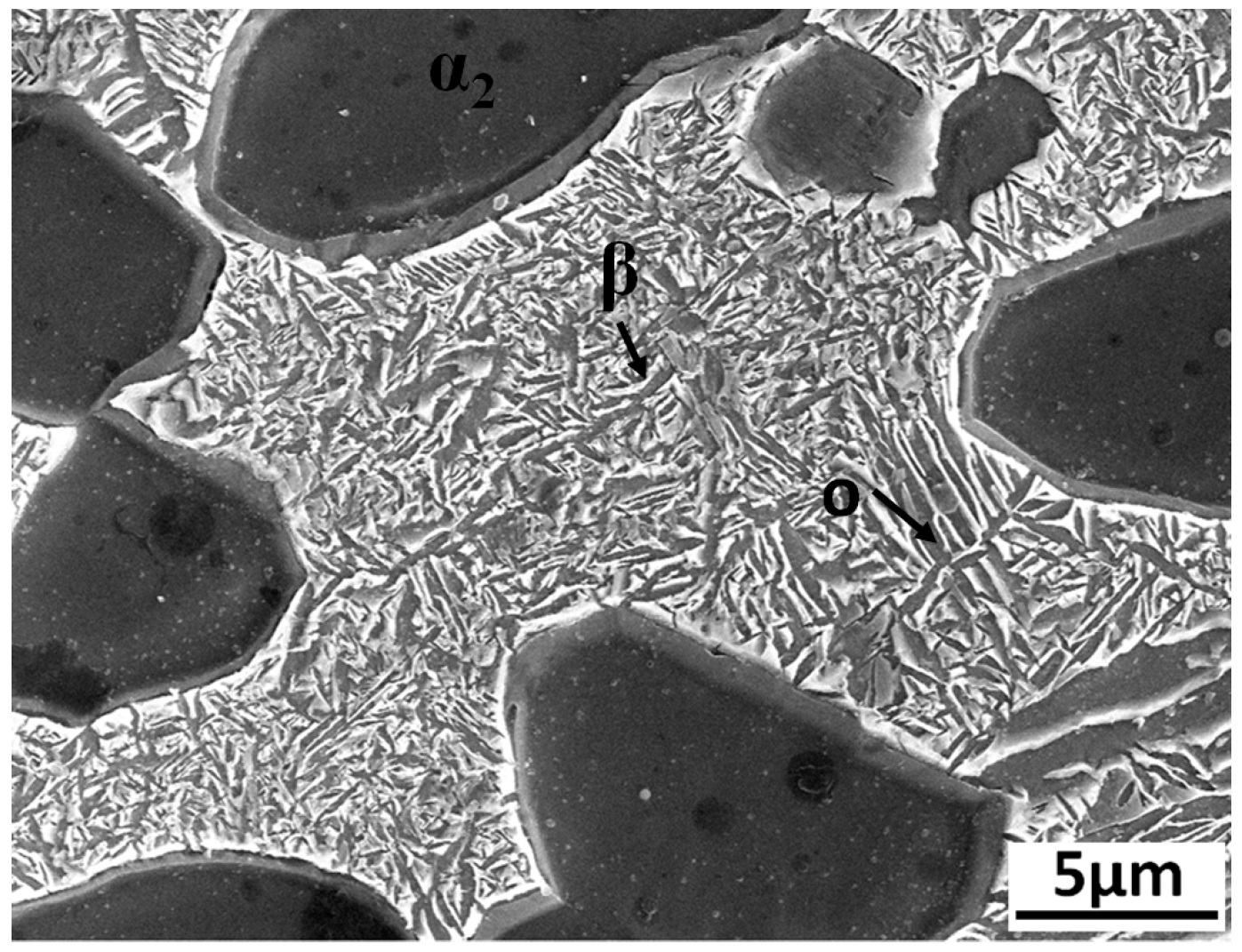
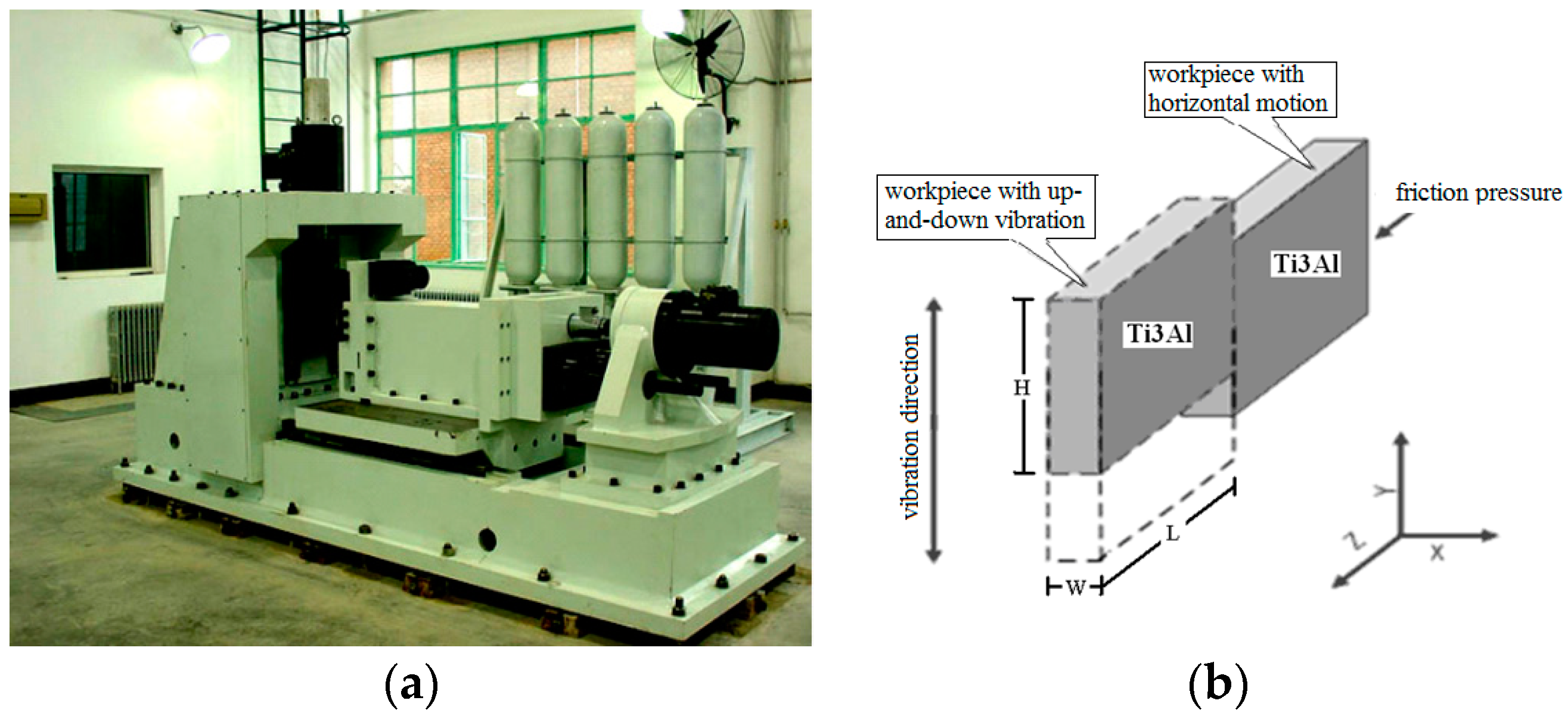

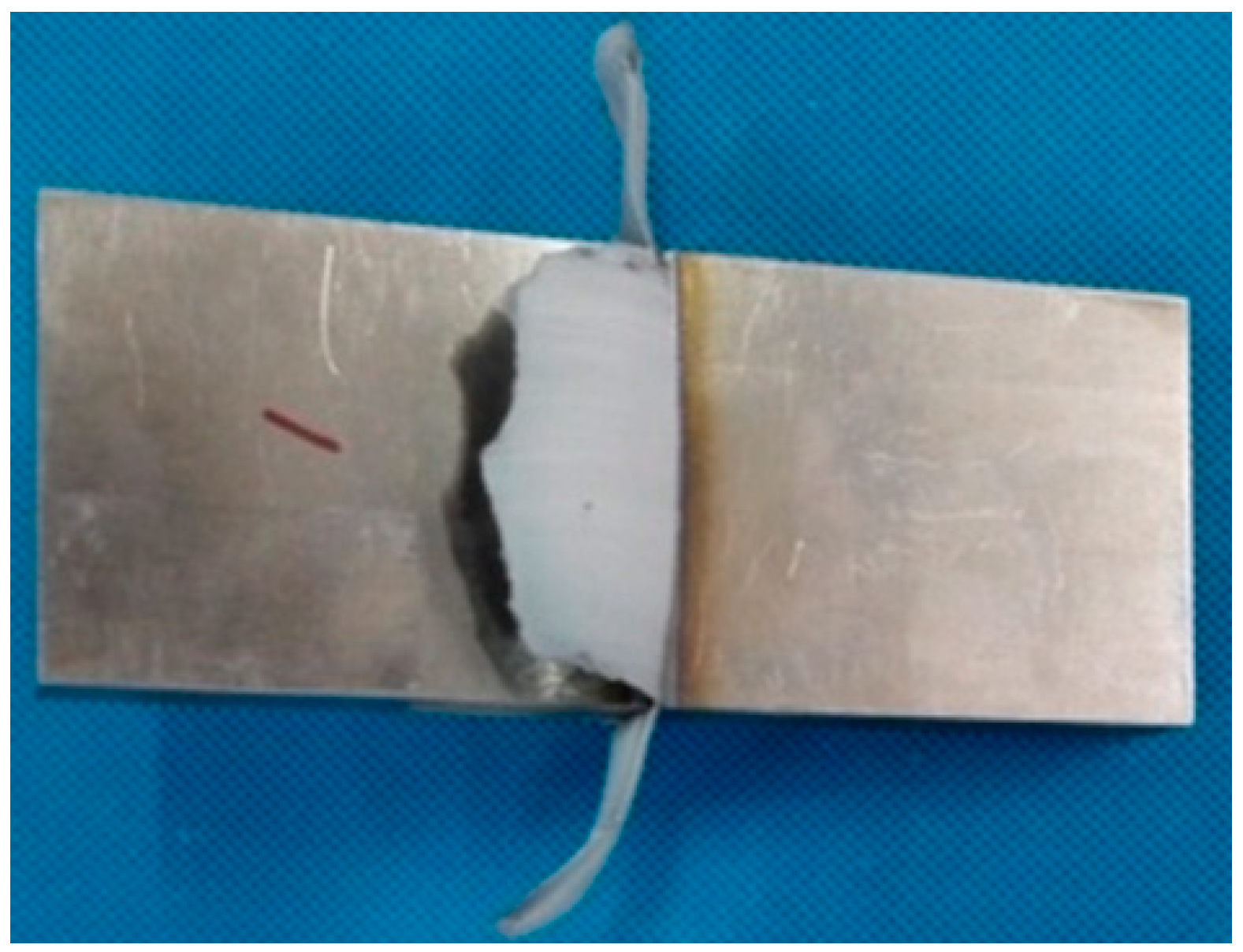
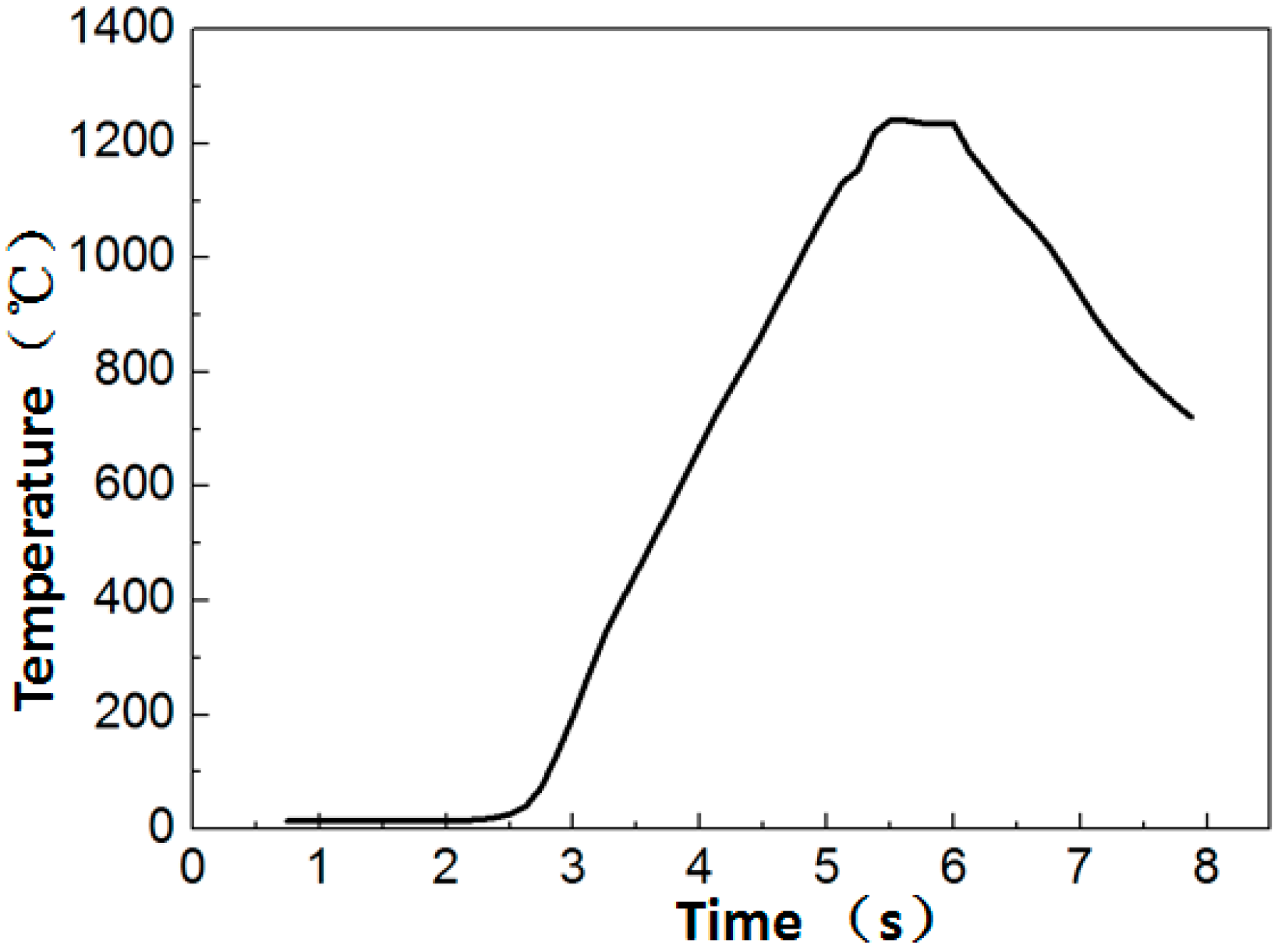


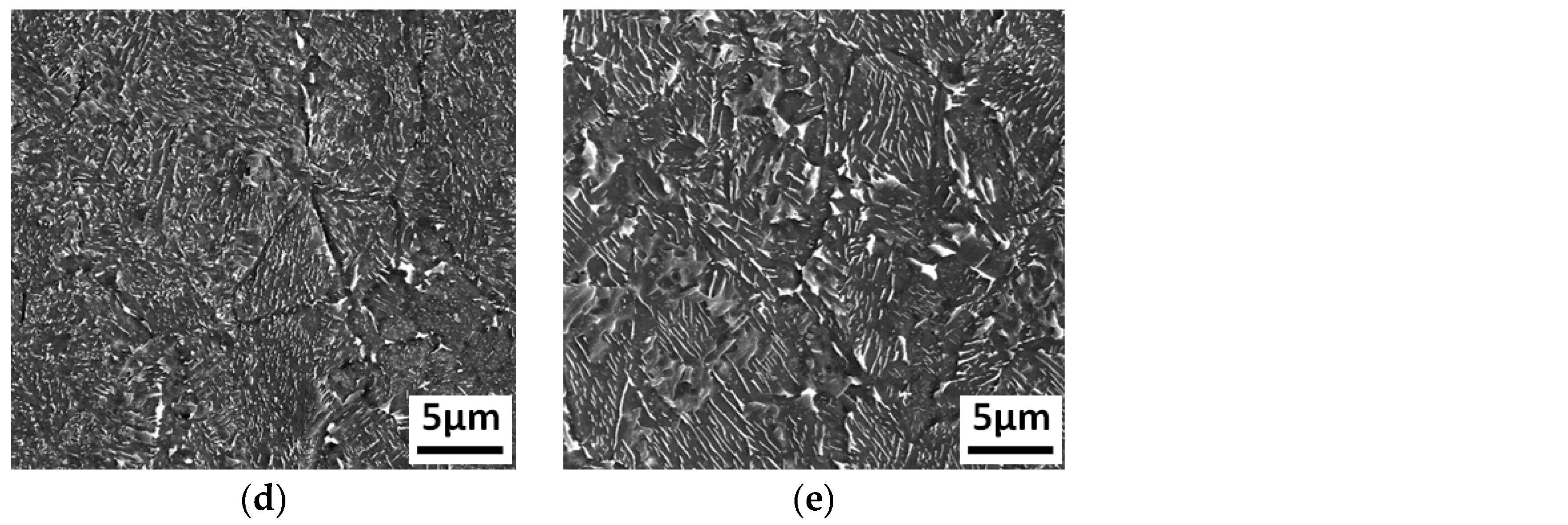
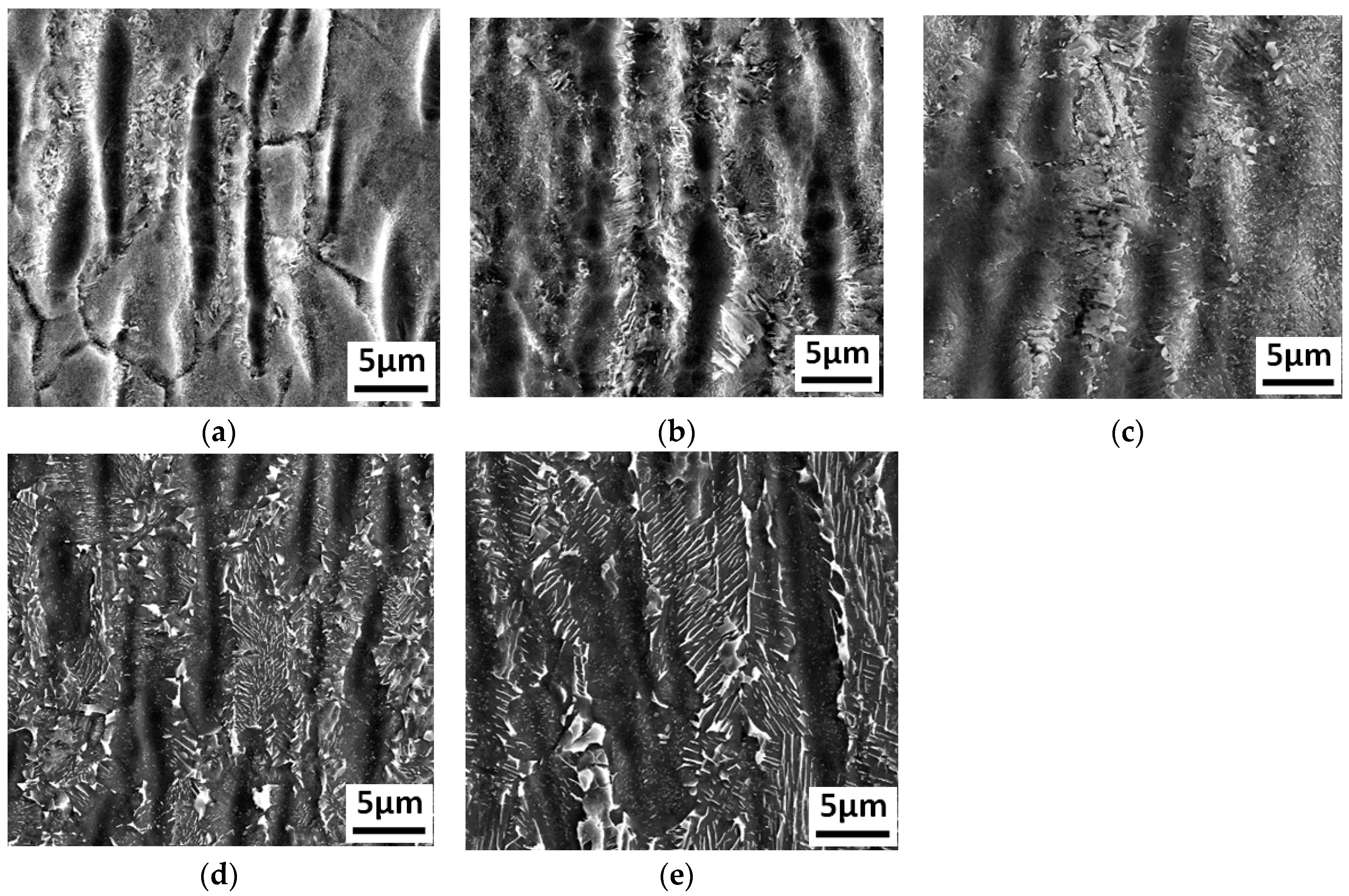
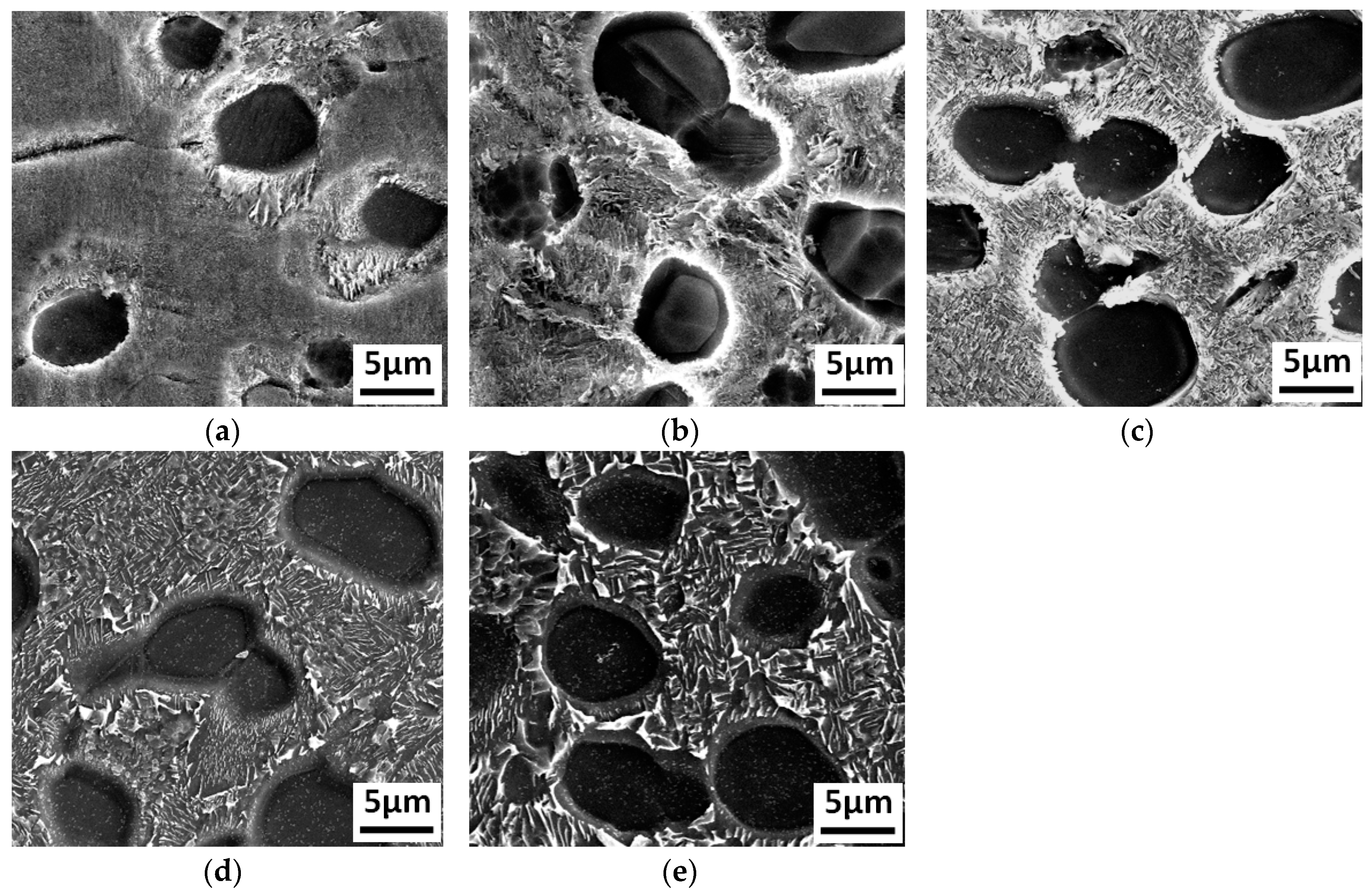
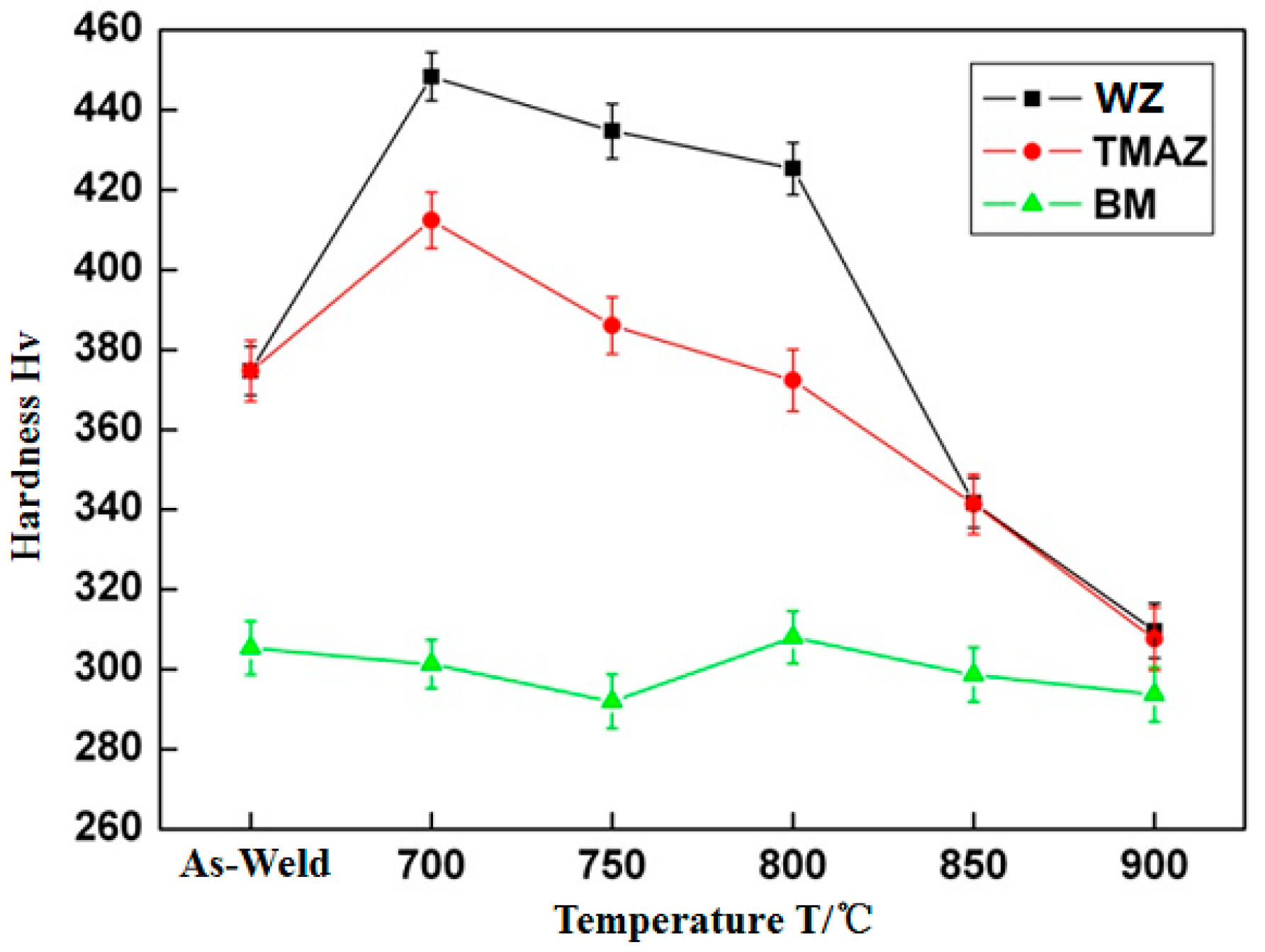


| Al | Nb | Ti |
|---|---|---|
| 12.44 | 31.71 | Bal. |
| Amplitude (mm) | Frequency (Hz) | Friction Pressure (T) | |
|---|---|---|---|
| Optimized welding process parameters | 3 | 40 | 4 |
© 2019 by the authors. Licensee MDPI, Basel, Switzerland. This article is an open access article distributed under the terms and conditions of the Creative Commons Attribution (CC BY) license (http://creativecommons.org/licenses/by/4.0/).
Share and Cite
Li, X.; He, J.; Zhang, T.; Tao, J.; Li, J.; Zhang, Y. Effect of Heat Treatment on the Microstructure and Properties of a Ti3Al Linear Friction Welding Joint. Materials 2019, 12, 1159. https://doi.org/10.3390/ma12071159
Li X, He J, Zhang T, Tao J, Li J, Zhang Y. Effect of Heat Treatment on the Microstructure and Properties of a Ti3Al Linear Friction Welding Joint. Materials. 2019; 12(7):1159. https://doi.org/10.3390/ma12071159
Chicago/Turabian StyleLi, Xiaohong, Jianchao He, Tiancang Zhang, Jun Tao, Ju Li, and Yanhua Zhang. 2019. "Effect of Heat Treatment on the Microstructure and Properties of a Ti3Al Linear Friction Welding Joint" Materials 12, no. 7: 1159. https://doi.org/10.3390/ma12071159




